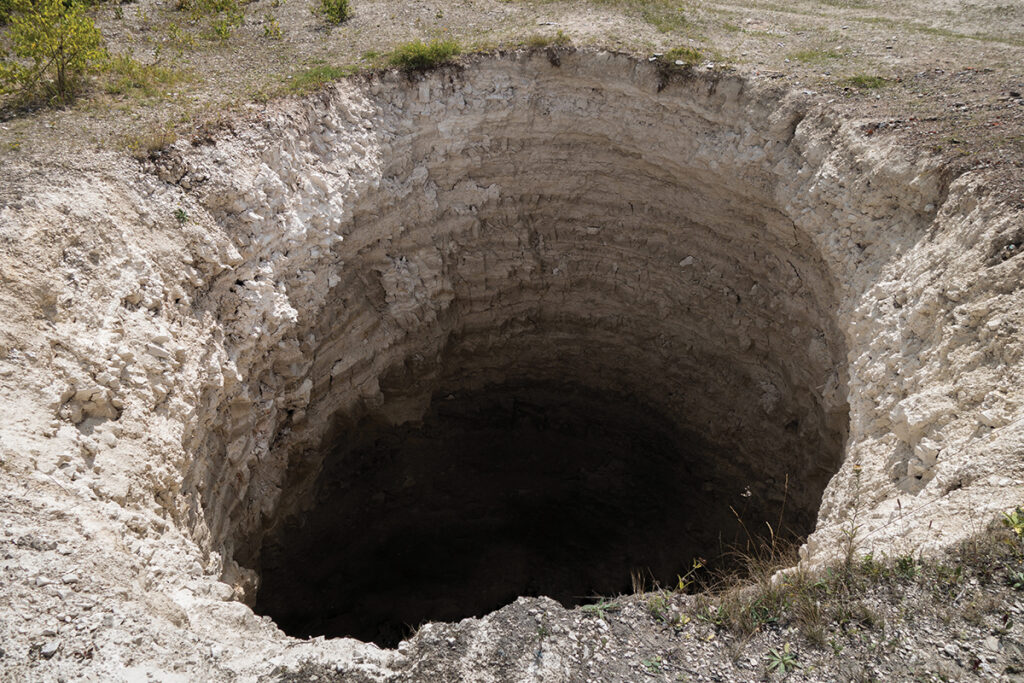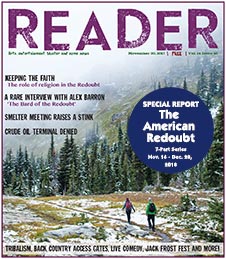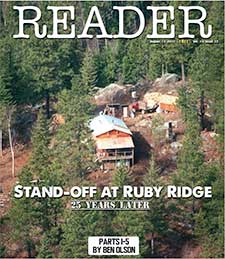Mad about Science: Sinkholes
By Brenden Bobby
Reader Columnist
Watch enough of the news and you’re bound to see a report pop up on a massive sinkhole opening in a semi-urban area and swallowing everything above, from roads and vehicles to warehouses and homes. These always seem to be completely random and occur without warning — one moment the ground is there, the next it’s a gaping chasm into the great dark beyond.
So what gives?
Soil gives, that’s what.
A sinkhole occurs when there is a void created beneath the surface of the ground. Loose soil doesn’t have the structural integrity required to resist the pull of gravity and will spontaneously collapse to fill one void and create another at the surface. This isn’t a completely random process, however, and there are some things that go into causing these voids to emerge in the first place.
Water is a major factor in the creation of subterranean voids. Water moves a lot and follows the path of least resistance as it’s pulled by gravity. Water carries things with it as it travels. The smaller the object, the more likely it is to be swept away by the force of a current. Loose underground soil and light pieces of sand are prime candidates to be moved by water, and will often shift and move to fill gaps little by little.
You may be wondering why it seems as though sinkholes are a relatively modern phenomenon. What has changed to make these happen so frequently in populated areas?
There are several factors at play. The reason this seems to be happening in more populated areas has to deal with developmental creep as we expand metropolitan areas into formerly rural spaces. The second major factor is mining, and more specifically coal mining.
Coal mining has often been concentrated in rural areas to minimize impact on higher population centers. Mining is loud and dirty and has a number of pollutant risks that can endanger a large number of people in densely populated areas.
The real issue is old coal mines. Mines that were operated in the early 1900s in the U.S. weren’t particularly well regulated. Mining companies would spring up in a boom and bore out every bit of valuable coal they could until the mine became too dangerous to operate or there weren’t enough rewards to reap. At that point, the company would either go out of business or be acquired by another company.
These companies didn’t do a very good job of mapping out their mines; and, even if they did, it wasn’t a guarantee that their records would be shared. There was no single repository for decommissioned coal mine plans, so they would often disappear once the business was no longer profitable.
This means there are an unknown number of abandoned mines with indeterminate layouts and voids scattered across the continent. Mines are subterranean voids in action; and, as knowledge of the layout of so many are completely lost to time, it’s easy for developers today to build right overtop of them without knowing they’re even there. A century of rainfall and soil shifting beneath the surface leads to unexpected and cataclysmic results that seem completely random at a surface level.
How do we go about preparing for a disaster that we can’t see or may never happen?
Addressing the issues of companies that no longer exist is a difficult challenge and little can be done to prevent the damage left by bygone entities. Now, property owners in vulnerable states as well as mining companies pay into state insurance funds that can help property owners recoup losses and damage caused by sinkholes. If a catastrophe does happen, property owners can be compensated for what happens in most cases.
Preventing future sinkholes is a different beast. Coal is formed in horizontal layers, which can make open-pit mining inefficient for extracting the resource — stripping an area like a quarry is expensive and can deal immense damage to ecosystems, whereas it might be easier and cleaner to bore out the seam while underground.
Mining companies need to make a compromise when mining this way through “room and pillar” mining. Engineers need to account for the load of overhead rock and soil to leave pillars of coal or rock in a grid-patterned mine. Many times, they will precisely calculate exactly how much material they need to leave behind in the form of pillars to maximize the amount of extracted coal without compromising the structure of the mine.
Room and pillar mining isn’t a panacea for sinkholes or disrupted geology. However, a void underground doesn’t always mean a sinkhole will form. Instead, sometimes the ground will shift and slope somewhat erratically over time in a process called subsidence. This can still cause damage to rigid structures like foundations, houses and roadways as the soil shifts and redistributes the load of a structure. In some cases, this can alter the flow of surface water to change the flow of rivers and streams.
Another modern method of efficient mining is called “longwall” mining, in which hydraulic jacks are rigged to mobile roof supports. A boring machine cuts strips of coal out of the earth until it’s ready to start a new row, then the structure shifts and allows the roof beside the supports to collapse. This guarantees subsidence, but it generally offers a more controlled method than room and pillar mining and allows for greater amounts of resources to be extracted.
In some cases, to prevent catastrophic subsidence, companies will spray a large amount of expandable polyurethane foam into voids to create structure and reduce the likelihood of sinkholes.
Stay curious, 7B.










 Coming up this week! Don’t miss Live Music, the Summer Sampler, the Art Party, Monarch Grind, the Sandpoint Renaissance Faire, and more! See the full list of events in the
Coming up this week! Don’t miss Live Music, the Summer Sampler, the Art Party, Monarch Grind, the Sandpoint Renaissance Faire, and more! See the full list of events in the 